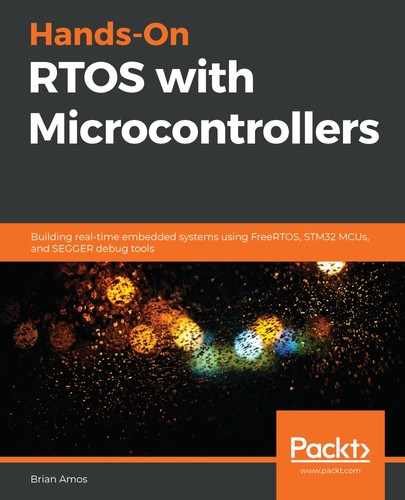In this chapter, we introduced three different ways of implementing low-level drivers that interface with hardware peripherals in the MCU. Interrupts and polled- and DMA-based drivers were all covered through examples and their performance was analyzed and compared using SEGGER SystemView. We also covered three different ways that FreeRTOS can interact with ISRs: semaphores, queues, and stream buffers. Considerations for choosing between the implementation options were also discussed, as well as when it is appropriate to use third-party peripheral drivers (STM HAL) and when "rolling your own" is best.
To get the most out of this chapter, you're encouraged to run through it on actual hardware. The development board was chosen (in part) with the hope that you might have access to Arduino shields. After running through the examples, an excellent next step would be to develop a driver for a shield or another piece of real-world hardware.
This chapter was really just the tip of the iceberg when it comes to driver implementation. There are many additional approaches and techniques that can be used when creating efficient implementations, from using different RTOS primitives beyond what is presented in this chapter to configuring MCU-specific functionality. Your designs don't need to be limited by what happens to be provided by a vendor.
You should now have a solid understanding of the many different ways low-level drivers can be implemented. In the next chapter, we'll take a look at how these drivers can be safely presented to higher-level code across multiple tasks. Providing easy access to drivers makes developing the final application fast and flexible.
